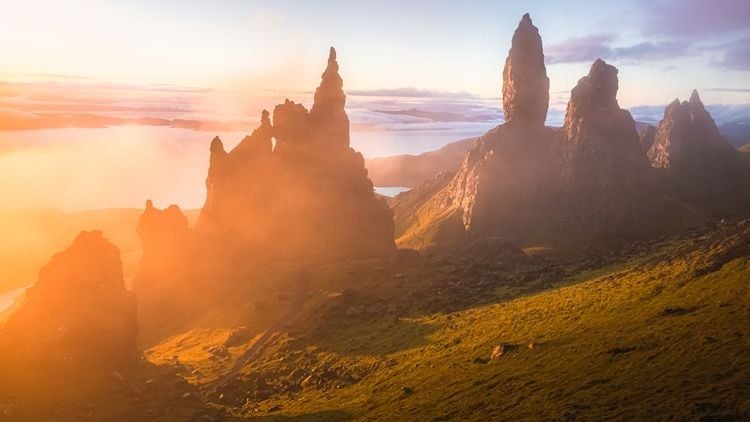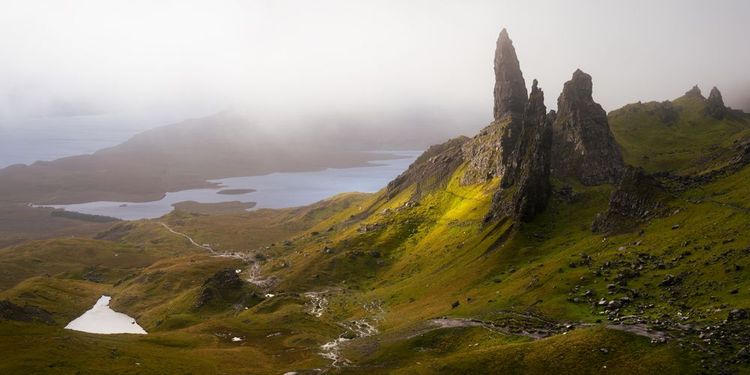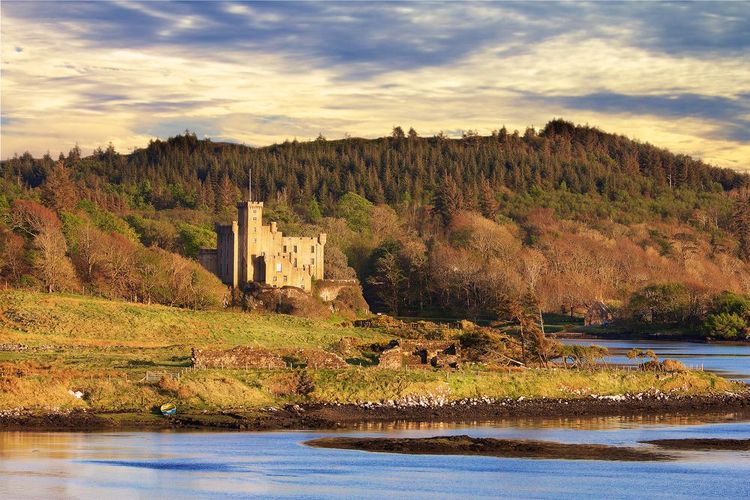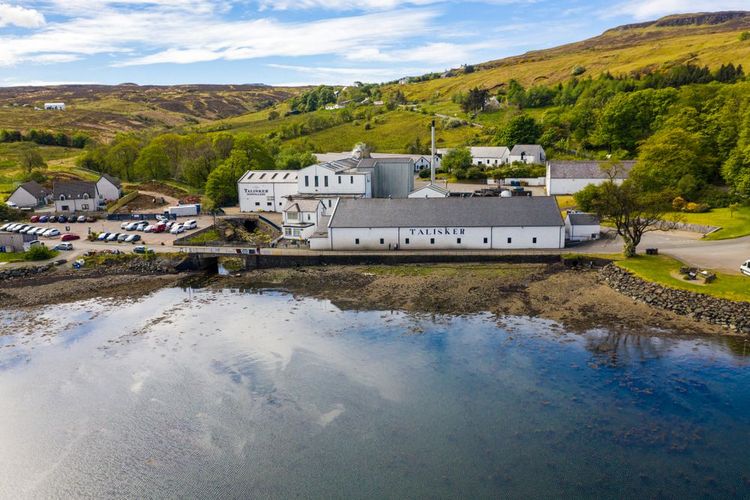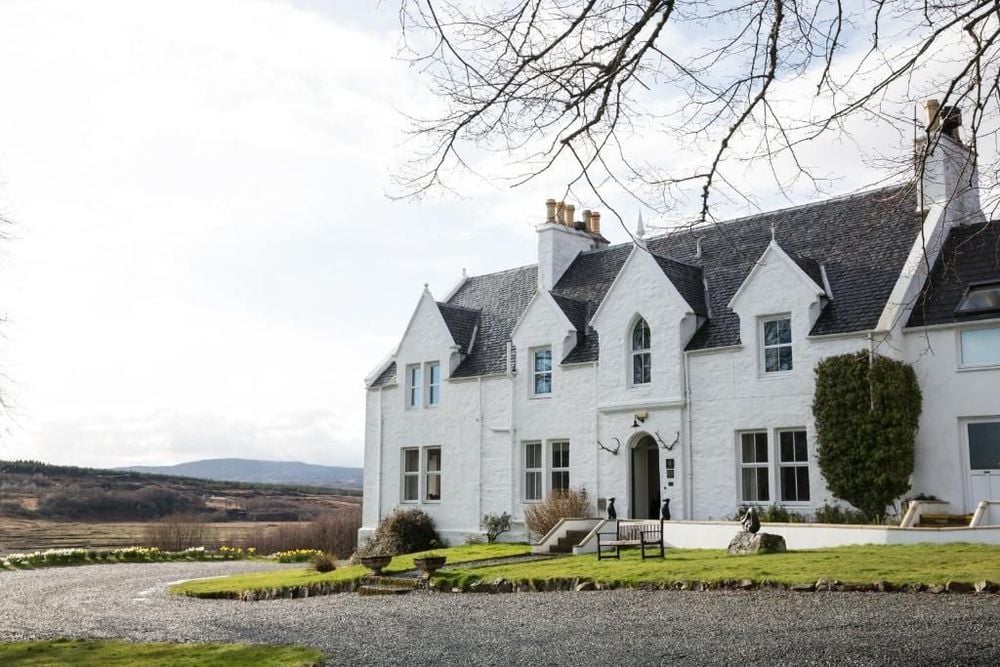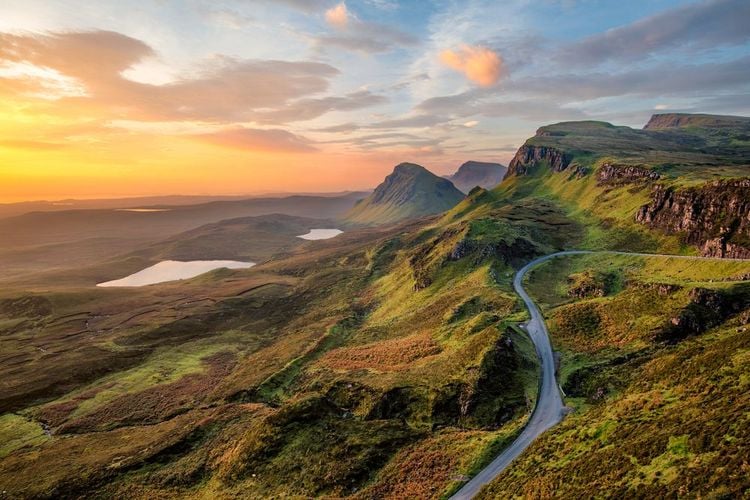There’s no better way to experience the Isle and its majesty than by taking the time to walk or hike through it. It’s nature like you’ve never seen it before. Skye has a reputation for being rather misty, one of its more poetic Gaelic names is Eilean a' Cheò, which translates to "island of the mist". This is part of what makes Skye’s scenery so atmospheric and breathtaking and it’s absolutely worth witnessing it for yourself. We’ve compiled some of our favourite walks and hikes that will allow you to appreciate Skye in all its misty glory.
The Quiraing Walk
Undoubtedly the most iconic walkon the Isle of Skye, the Quiraig walk is a must-do when visiting the Isle. The walk is a loop which covers a total distance of about 6.8km and the average time it takes to complete is around 2 hours without taking any breaks. The walk will take you along some of the most epic scenery Scotland has to offer. Part of the stunning Trotternish ridge, the walk takes you along the spectacular high cliffs. That said, because the walk takes you very near to the high cliffs’ edge, make sure you only undertake it on a clear day when you have excellent visibility ahead. Safety always comes first so make sure to save the misty and atmospheric walks for a different place.
The Old Man of Storr
One of the busiest walks on the Isle, the Old Man of Storr is a unique and peculiar set of rock formations that have become an emblematic landmark of the Isle of Skye and are without a doubt worth a visit. Also part of the Trotternish ridge, the pinnacle of rock was formed after an ancient landslide and is one of the most photographed sights on the isle today. The path to the Old Man of Storr is the same going both ways, covering a distance of about 3.8km, taking about 1hr 15 mins to get back to the carpark.
The Fairy Glen
Disappointingly, the Fairy Glen has no actual history associated with fairy legends or tales but gets its name from its unusualness. The roads slither through this set of grassy-topped hills with small lochans dispersed throughout, giving the location its undeniable ethereal feel. To make the whole thing even more whimsical, one of the hills is topped by what looks like a ruin, which has garnered the name Castle Ewan, although there is no explanation as to this choice of name. You can also find a small cave in the low cliff behind Castle Ewan that is said to bring good luck to anyone who presses coins into cracks in the rock. It is recommended that visitors park in Uig and then walk about 30 minutes up to the Glen.
Kylerhea Otter Hide
The walk to the Otter Hide is a stunning forest path along Kylerhea’s shore. The walk is short, covering around 2 km and taking about 30 minutes to complete and is a perfect easy walk for anyone, even kids, to undertake. The highlight of this walk? Arriving at the wooden hide and getting to watch some adorable otters in their natural habitat.
